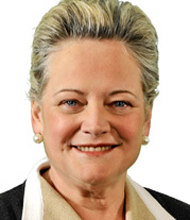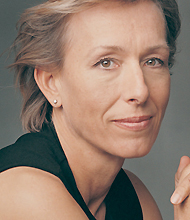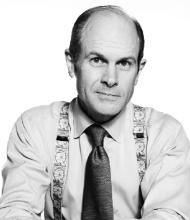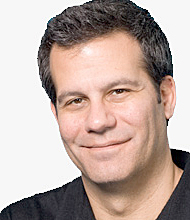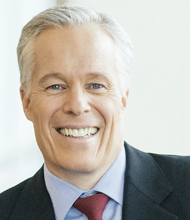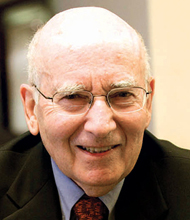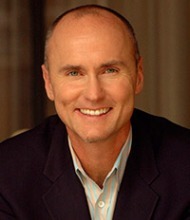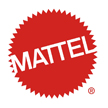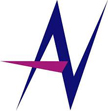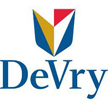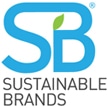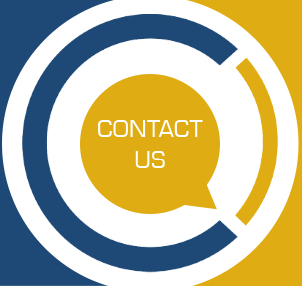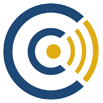| TRAVELS FROM |
|
SPEAKING FEE RANGE ** Please note that while this speaker’s specific speaking fee falls within the range posted above (for Continental U.S. based events), fees are subject to change. For current fee information or international event fees (which are generally 50-75% more than U.S based event fees), please contact us. $30,000 to $50,000 |
|
BOOK TAMARA ERICKSON speakers@coreagency.com |
| TRAVELS FROM |
|
SPEAKING FEE RANGE* $30,000 to $50,000 |
|
Book Tamara Erickson speakers@coreagency.com |
- Founder and CEO of Tammy Erickson Associates, a leading business research firm.
- A skilled interpreter and authority on generational characteristics in the workplace, helping audiences recognize and capitalize upon the unique strengths each generation contributes.
- McKinsey Award-winning contributor to the Harvard Business Review and author of numerous books addressing generational distinctives and the implications of social enterprise software upon how we work.
- Executive Fellow of organizational behavior at the London Business School.
Tamara Erickson is an authority on generational characteristics in the workplace and a leading expert in the realms of leadership, collaboration, innovation, and the nature of work in today’s rapidly changing organizational environments. As founder and CEO of Tammy Erickson Associates, Erickson leads a team of researchers dedicated to creating successful strategies for coping with today’s business challenges and crafting tailored plans to meet the needs of specific companies.
A McKinsey Award-winning author, Erickson has published many articles in the Harvard Business Review and is the author of a trilogy of volumes addressing how individuals in specific generations can thrive in the contemporary workplace: Retire Retirement: Career Strategies for the Boomer Generation; Plugged In: The Generation Y Guide to Thriving at Work; and Gen X? Keeping Up, Moving Ahead, and Getting the Career You Want. Her “Across the Ages” blog is featured weekly on Harvard Business Press Online.
As executive fellow of organizational behavior at the London Business School, Erickson has designed and co-directs the institution’s premier leadership program for senior business executives. Her Tammy Erickson Associates team has both worked independently and partnered with LBS to develop a number of research initiatives, including Democracy is Destiny, The New Employee/Employer Equation, and The Cooperative Advantage.
Erickson’s current research targets the implications of social enterprise software upon how we work. Her co-authored volume Third Generation R & D: Managing the Link to Corporate Strategy has become one of the premier guides to technology investment and management. Thinkers50 has three times named Erickson one of the 50 most influential living management theoreticians in the world.
"Thanks again for a fabulous presentation and discussion. Very well done. Very informative and engaging. I really really appreciate the effort you made to engage the team on this topic. Many implications for our firm."
Steve Milovich, SVP, Human Resources, Walt Disney Company
"Thank you so much for presenting at our conference. We have and continue to receive great feedback on the conference overall, and in particular, your presentation. Out team appreciated your depth of knowledge and research, global focus, humor and wit. We consider ourselves fortunate to have been graced with your participation!"
SR, HR Manager, Fortune 100 Company
"Your presentation received some of the highest marks we have ever seen at the IACPR. They loved your insights, your humor and, obviously, your expertise. And we appreciate how flexible you were as we kept coming against new surprises in the planning process! Again, thank you, thank you. Everyone wants your book so we'll be doing a bulk order for the attendees."
Kay Kennedy, Executive Director, IACPR
"Tammy Erickson was a phenomenal success! Our President said it was the best presentation of that type that he's ever heard and we are thrilled! We had people clamoring for copies of her presentation and it was a great idea to place her first on the program as she set the tone for the day and raised the bar considerably. It's always a good sign when no one even gets up to grab coffee!"
Mary Weekley, American Gas Association
"What an honor it was for me to introduce you at the conference! Your presentation set the tone for our agenda and I stopped counting the number of references that followed that was offered in your talk. I could not think of a better kick-off for the conference. Thank you again for your time and enthusiasm."
Eileen Finn, Eileen Finn & Associates
"I wanted to express our thanks to you again for speaking at our 2006 Partners' Meeting. Your keynote session was extremely well-received, and garnering the highest points of the meeting on attendee evaluations. Some comments, in particular, I wanted to share with you were:"
- 'Thought provoking'
- 'Nice interplay with audience'
- 'Very comprehensive, practical advice'
- 'Very interesting and informative'
- 'A program highpoint'"
Ian Fanton, Vice President, Harvard Business School Publishing
"My heartfelt thanks for joining us at the IACPR Conference and for a truly inspirational presentation! Positioning you as our first speaker was the smartest thing we did—you set the tone for the rest of the conference and every speaker that followed you made reference to your remarks. You got tremendous feedback from everyone in the audience. Personally, I sure felt the reality check! We have decided to purchase a copy of your book for each member who attended the conference; we felt that you made an enormous contribution to each of us. I think we each believe we have a responsibility to educate our companies—with a sense of urgency—about how to take action for the talent market ahead. You have an open invitation to join us for any IACPR conference in the future; it would be our pleasure to have you back anytime."
Nancie Whitehouse, Whitehouse Advisors LLC
"I had the privilege of hearing Tammy's presentation to the International HR meeting in Houston last Wednesday. It was most thought provoking and challenging and her presentation and delivery were excellent. It was my first time to hear her talk and in speaking with colleagues, they commented that ‘they always go hear her wherever she is. She is great.' Well, you now have a new convert. Many of her points resonate with what our senior HR management have been saying."
Donald D. Vincent, Sr. Manager, Human Resources, Washington Group International
"You did a great job. You hit all the objectives I had for your discussion. I look forward to working with you in the future."
Corey Seitz, Global Head of Talent Management, Novartis International
"Many thanks for the time you put into preparing this presentation. Responses I received from our members indicate how much they valued the information you shared and their interest in inviting you to present to our group again. Below are some of the comments I received:
- 'Outstanding! Great ideas, trends, conclusion and especially recommendations.'
- 'Best session of the retreat!'
- 'Very interesting. In addition to excellent research findings there were practical action steps that are immediately applicable.'
- 'Great data and insights.'
- 'Tamara was outstanding.'"
Linda Newton, Executive Director, HARRT at UCLA
“Young people these days” is one of those phrases older generations often utter in bewilderment and even disgust. Erickson provides the resources to turn “young people these days” into a phrase colored by appreciation and excitement about the unique perspective each generation contributes to the workplace – even as she helps those “young people” themselves recognize the distinctive strengths their elders contribute.
Erickson’s years of careful research have generated a remarkable body of insight into the defining characteristics of generations and how generations interact, both with each other and with new technology. As society grows and changes, old assumptions no longer hold true. The foundations of what it means to productively work and be successful can shift underneath us. Globalization creates additional frustrations for companies already dealing with generational conflict and effective use of technology. Erickson works with clients to develop customized sessions geared toward addressing the unique complexities facing their organizations.
Erickson’s clear analysis combines interpretive frameworks with concrete information that audiences can put into action to improve communication, better utilize their work forces, and engage the future with enthusiasm. Above all, Erickson recognizes that empathy is key to developing positive relationships, generationally, globally, and through effective use of technology.
Many groups are looking for a way to bring the latest trends and issues affecting talent, innovation and intelligent organizations into focus – and to gain confidence and consensus for action.
Tammy′s speeches and workshops are designed to do just that. With humor – and a clear discussion of the interplay among shifting attitudes, new technologies, changing demographics, and the latest understanding of engagement, collaboration and innovation – She helps you “turn on the light bulb” within your group and, at the appropriate time, work through the ideas and approaches best suited to meet your organization’s shifting needs.
All of her sessions are customized to the specific needs and interests of your group and can be done as either a keynote lecture of 60-90 minutes or an interactive workshop of 3-6 hours. For workshops, I have developed a number of popular group exercises designed to encourage wide-spread participation, learning, and application.
Here are the most frequently requested topics for Tammy′s speaking engagements and workshops today.
Leading a Multi-Generational Workforce
Four generations are working together in today’s workplace—and a fifth is on the way. Each brings unique assumptions to the job. As a result, events in the workplace are often interpreted differently by individuals in different generations. What may seem like good news to a Boomer might well be an unsettling and unwelcome development to a member of Generation X. Things that members of Gen Y love often seem unappealing or frivolous to those in older generations.
Generational perspectives form because many of our most powerful and lasting beliefs are shaped when we are teenagers, when we first shift our focus from tangible objects and begin to wrestle with the values and ideas in the world around us. What we see and hear—and the conclusions we draw—influence for our lifetimes what we value, how we measure success, whom we trust, and the priorities we set for our own lives, including the role work will play within it. Because members of a generation share some (but not, of course, all) of the same experiences, they tend to form some common perspectives.
Today it’s increasingly important to create a culture that is welcoming and engaging for talented individuals of all ages. Based on years of in-depth research and three books on generations in the workforce, Tammy Erickson helps audiences understand the underlying evolution of the assumptions each generation brings to work, with humor, empathy and enormous insight. Contributing rich data and unparalleled research with her optimistic point of view, Tammy offers practical strategies and actionable insights so that audiences of all ages will better understand each other.
Reactions from participants in Tammy’s sessions consistently rate hers as some of the most powerful insights into the generations they’ve ever heard, affecting not-only their future work relationships, but lending new understanding into family dynamics. “I’ve heard people speak about the generations before, but never anything like this!” “Thank you for your life-changing keynote.”
Global Generations
Geography significantly influences the formation of generational beliefs and behavior. Each country’s unique social, political, and economic events shape specific views and attitudes among today’s adults. Understanding these country-to-country differences is critical to creating employment deals that attract and retain the best employees in each geographic area. Western generational models cannot be applied broadly to a global workforce.
Tammy’s research has extended to the generations in a number of specific countries around the world, including the four BRIC nations, as well as countries in Europe and the Middle East. She will work with you to develop a customized session, focusing on the areas of the world that are most important to your business – or provide an overview of the similarities and differences within one generation around the globe.
Understanding individuals’ backgrounds and resultant perspectives or mental models both within generations and across geographies helps leaders grapple with the diversity, challenges, and potential of a global workforce. Better understanding leads to greater empathy for the “other guy’s” point of view and, ultimately, provides the foundation for more effective and efficient talent management practices.
Get Ready for the Next Wave: The Re-Generation
The next demographic wave is almost ready to hit the shore. Children who are 15-and-under today are almost certainly not members of Generation Y. They’ve been influenced by a very different set of global events than those that shaped the ideas and preferences of people in their late teens and 20s today.
Today’s children have been forming their mental maps of the future at a time when our national and global optimism has been doused with the cold water realization that we are facing significant, seemingly intractable problems on multiple fronts. The inconvenient truths of the past half century – precarious global finances, resource constraints, shifting economic power, and environmental degradation – are settling around our shoulders, and these early teens are not unaware of these issues or their complexity. This generation’s mental map is based on a world with finite limits and no easy answers.
What is this new generation, soon to be the fifth generation in many workplaces, all about? What do they value and how might they shape both the future of work and of the marketplace? Tammy’s newest research, the subject of a forthcoming book, brings the “Re-Generation” into sharp focus, with insights for employers, marketers, educators . . . and parents.
Ten Assumptions that Are No Longer True . . . But Still Shape Our Organizations Today
Today’s organizations are ripe for change. Over the next several decades, we’ll see very different business entities take their place.
Why? Because today’s organizations were designed in response to conditions that no longer exist. They are predicated on a set of underlying assumptions that most of us quickly recognize are not valid today. Do you still think loyal behavior at work will lead to a lifetime of protection and care from the corporation? Of course not. But many of our cherished talent management practices, from pension plans to perquisites, like vacation, that are based on tenure, are holdovers from the days when this old assumption rang true.
There are many new business realities that we haven’t yet translated into our management practices and organizational designs. It’s time to question which practices still make sense and whether there are new options, better suited to today.
In this provocative and interactive session based on a forth-coming book, Tammy will list ten assumptions that underpin organizations today. All have major implications for the way we manage talent and run organizations. None are true today. She’ll leave participants looking at their organizations – and themselves – through a new lens.
What Does It Mean to Work Here? A Signature Experience for Extraordinary Engagement
A highly engaged workforce has never been more important. Much of the work today requires an individual’s discretionary effort – people have to choose to innovate, share knowledge, and provide extraordinary service. Many employees, particularly those in younger generations, are less motivated by money than the connection they feel to the work. And the lingering recessionary climate has left many employees demoralized – and in need of a significant emotional boost.
Tammy’s unique, ground-breaking work on employee engagement provides some powerful perspectives for today’s leaders. As she’ll explain, meaning is the new money. Companies with extraordinary employee-employer relationships understand what it means to work in their organizations and excel at embedding that meaning in the day-to-day employee experience.
Engaging employees is never about copying another corporation’s best practices. It’s about digging deep to identify what’s uniquely important to your organization. As Tammy’s research shows, individuals find meaning in different aspects of work; work plays different roles in our lives. She helps audiences understand six psycho-demographic segments that describe our relationship to work and provides ways to understand the values that are most important to your employee population.
To bring them alive, leading companies first understand who they are and then design their organizational practices around their values. One of the most powerful approaches to strengthen meaning in the workplace is the creation of Signature Experiences – distinctive, value-driven elements of the employees’ experience that encourage self-selection and reinforce values, leading to retention.
Learn how to re-energize and re-engage your organization. Reconnect with and reinvigorate what it means to work here.
Innovation in the Intelligent Economy: Bringing People and Ideas Together
The heart of innovation is the combination of two previously unrelated ideas. Creating the capacity for innovation in your organization means encouraging collaboration: namely, sharing knowledge and working together to create new ideas. The paradox: many of the best ways to encourage collaboration work against innovation! How can you balance both?
Based on ground-breaking research—one of the largest and most rigorous studies of collaborative behavior within organizations—as well as years of experience with innovative organizations, three keys emerge: building the capacity to collaborate, asking great questions, and introducing sufficient diversity of thought and capability. Tammy identifies the highest-priority investments and practices needed to build an organization skilled at successful innovation.
This is a fresh look at one of the most challenging aspects of leadership today – creating an organization filled with the on-going spark of new ideas. Others address innovation from a process perspective – how to manage the development of innovations once an idea has surfaced, or provide a strategic overview. Tammy brings her unique organizational understanding to outline the embedded practices that create a culture of sustained innovation.
Building Collaborative Organizations
New technologies are making their way into the workplace, offering significant improvements in generating, capturing, and sharing knowledge, finding helpful colleagues and information, tapping into new sources of innovation and expertise, and harnessing the “wisdom of crowds.” Over time, these collaborative technologies will change the way work is done and the way organizations function. They will shift the way we interact with people on our teams, find external expertise when it’s needed, and share ideas and observations more broadly.
We are on the brink of an important transformation. Today’s technologies enable a very different level of business performance. The frontier of human productive capacity is the power of extended collaboration – the ability to work together beyond the scope of small groups.
But realizing the benefits of these new capabilities is not as straightforward as installing a document-sharing or Facebook-like application inside your organization. People aren’t necessarily as motivated to share documents at work as they are to share baby photos in their personal lives. Identifying relevant business connections isn’t as clear cut as finding old high school friends. The range of activities that collaborative technologies can take on to enhance performance and drive increased productivity in the workplace is far broader than the activities most of us have explored during our personal use. Perhaps most importantly, many of our existing work practices actually hinder the successful use of extended collaboration.
How do you transform an organization that doesn’t have a collaborative culture? Which practices are essential to move in that direction? Which companies are taking new and interesting approaches to the ways they work, leveraging today’s capabilities? What do they tell us about the characteristics of organizations that excel at extended collaboration? Based on several years of deep research into the barriers and motivations for organization-wide collaboration, Tammy provides sound guidance on re-shaping your organization for future success.
Four Keys to Social Media Adoption
“We’ve spent a fortune on collaborative technology, but no one is using it . . . or if they are, it’s for purely social, non-productive activities.”
Sound familiar? It’s a lament heard many times from organizations that have raced to bring social media in the workplace. Today most leaders are sold on the tremendous potential new collaborative technologies present to change the way work gets done: increasing productivity, stimulating innovation, and enhancing employee engagement. But realizing the benefits is proving to be a frustrating challenge for many.
Just gaining widespread adoption – getting people to use the technology – can present a major hurdle. Driving real changes in the way work is done can be even harder. Why is it proving so difficult? And what can you do to speed not only adoption, but the adoption of productive practices in your organization?
Without question, social technology, properly applied, enables a very different level of performance. Competition will shift the playing field if you don’t. This train is leaving the station. How can you make sure your organization is not only on board but knows where it’s going and gets the kind of participation that truly makes a difference in productivity, creativity, and collaboration?
This session focuses specifically on alleviating the frustrations associated with technology adoption.
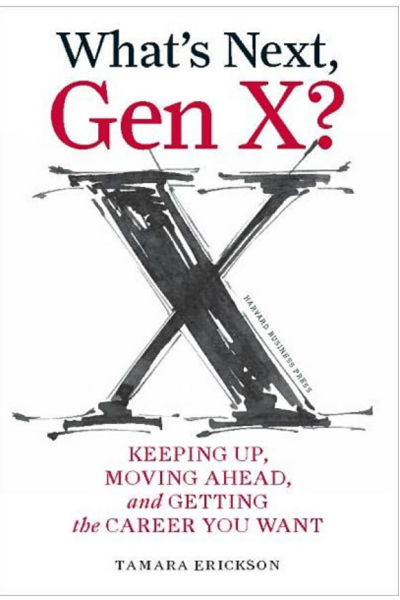
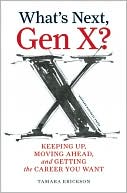
What's Next, Gen X?: Keeping Up, Moving Ahead, and Getting the Career You Want
You're a member of Generation X-the 30-to-44 age cohort. And you've drawn the short stick when it comes to work. The economy has been stacked against you from the beginning. Worse, you're sandwiched between Boomers (with their constant back-patting blather and refusal to retire) and Gen Y's (with their relentless confidence and demands for attention).
You're stuck in the middle-of your life and between two huge generations that dote on each other.
But you can move forward in your career. In What's Next, Gen X? Tamara Erickson shows how. She explains the forces affecting attitudes and behaviors in each generation-Boomer, X, and Y-so you can start relating more productively with bosses, peers, and employees.
Erickson then assesses Gen X's progress in life so far and analyzes the implications of organizational and technological changes for your professional future. She lays out a powerful framework for shaping a satisfying, meaningful career, revealing how to:
- Identify work that matches what you care most about
- Succeed in a corporate career or an entrepreneurial venture
- Spot and seize newly emerging professional opportunities
- Use your unique capabilities to become an effective leader
Provocative and engaging, What's Next, Gen X? helps you break free from the middle and chart a fulfilling course for the years ahead.
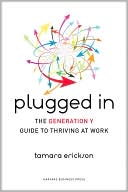
Plugged In: The Generation Y Guide to Thriving at Work
They make up nearly one-third of all Americans living today. Born after 1980, they're now pouring into the work world with values, aspirations, and approaches that differ markedly from their parents and coworkers. They're Generation Y.
In Plugged In, Tamara Erickson shows Gen Y's how to use their own unique strengths to understand and influence their professional relationships, to figure out how they define "success," and to help them find their way in the changing workplace.
Filled with Erickson's extensive research into demographic trends and thoughtful insights, Plugged In gives Gen Y's the information they crave to connect with the working world and to craft the lives they want.
The author reveals:
- A framework Y's can use to develop their own criteria for making career choices
- The unique assets and strengths Y's bring to the workplace
- How X'ers and Boomers view Generation Y and how the different generations can collaborate more effectively at work
- 10 rules that can help Generation Y's succeed in the corporate world
With her trademark warmth and liveliness, Erickson provides a thoughtful, valuable guidebook for the latest newcomers on the corporate scene.
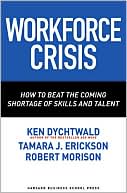
Workforce Crisis: How to Beat the Coming Shortage of Skills and Talent
What Companies Must Do Now to Survive the Impending Talent Crisis
Unprecedented shifts in the age distribution and diversity of the global labor pool are underway. Within the decade, as the massive boomer generation begins to retire and fewer skilled workers are available to replace them, companies in industrialized markets will face a labor shortage and brain drain of dramatic proportions.
Ken Dychtwald, Tamara Erickson, and Robert Morison argue that companies ignore these shifts at great peril. Survival will depend on redefining retirement and transforming management and human resource practices to attract, accommodate, and retain workers of all ages and backgrounds.
Based on decades of groundbreaking research and study, the authors present innovative and actionable management techniques for leveraging the knowledge of mature workers, reengaging disillusioned midcareer workers, and attracting and retaining talented younger workers.
This timely book will help organizations sustain their competitive edge in tomorrow s inevitably tighter labor markets.

 VIDEO
VIDEO TESTIMONIALS
TESTIMONIALS PROGRAMS
PROGRAMS BOOKS
BOOKS